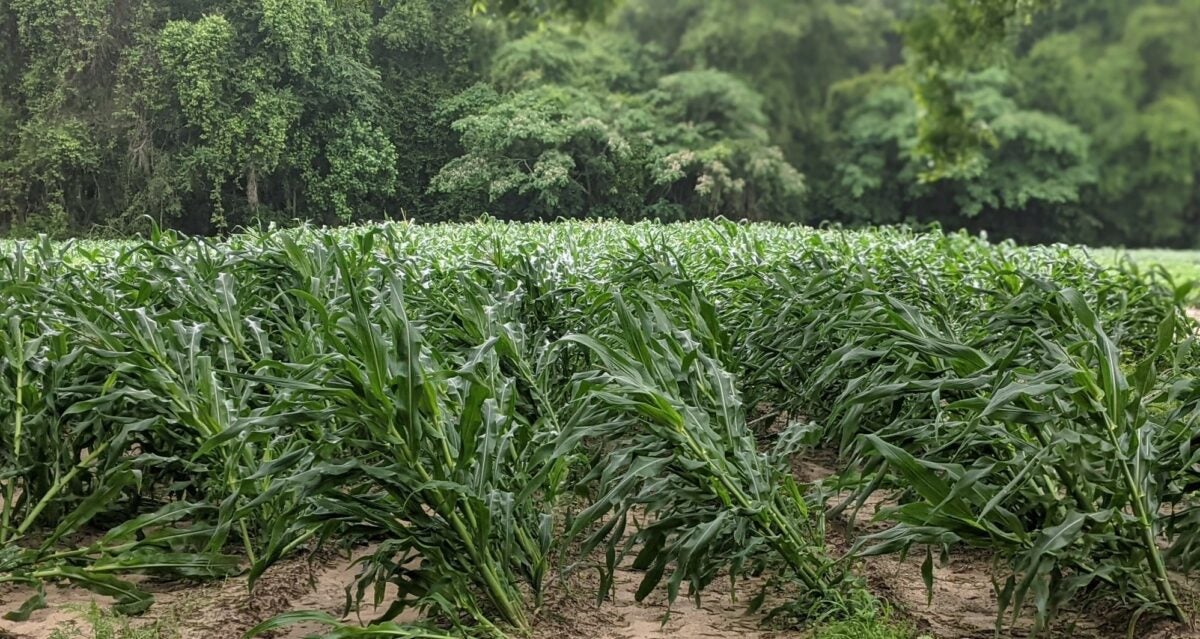Rain continues to come and go through the south-central U.S., causing flooding and damaging crops.
Southeastern Texas
During the February freezing rain storm and record cold snap, Texas farmers lost at least $600 million worth of crops, according to a report from Beaumont, Texas, station KBMT-TV. Now, farmers are having to clean up again after major rain has flooded many crops.
Related: Borderlands: Winter freeze could devastate Texas citrus industry
Some areas like Beaumont-Port Arthur have seen almost 30 inches of rain this year, which is about 8 inches above normal. Houston has received more than 24 inches year-to-date, with close to 19 inches in Corpus Christi. Half, or nearly half, of this year’s rain in these places came in May.
It’s probably been the wettest year for Desiree Lewis, owner of Pecan Hill Farm Market in Jasper, Texas, which opened in 2011.
“It really hurt our business as to where we couldn’t sell our vegetables,” Lewis told KBMT. “We end up having to throw a lot of produce away because the customers we usually have were not able to get here.”

Lack of sunshine that accompanies excessive rainfall is bad for plants because they can’t photosynthesize, and the roots don’t dry out. This has also negatively impacted tomatoes, watermelon, cantaloupes, corn and potatoes.
“We could not get the tractor in there to dig the potatoes, and the longer we waited, the more potatoes that we lost in the ground due to rotting,” Lewis added.
About 2,500 pounds of her potatoes will be affected.
More rain is in the forecast this week, but Lewis is staying one step ahead by planting on plastic mulch to keep their produce off the ground in case of more floods.
Southwestern Louisiana
This spring started out less than ideal for farmers in southwestern Louisiana, too. After the ice storm, they began to plant but were faced with some cool and wet days that delayed the progress of crops like rice and soybeans. Jimmy Meaux, Louisiana State University AgCenter county agent for Calcasieu Parish, told KPLC-TV that many young soybean crops may not survive.
“They may not get as big or have as many on a pod … if we don’t plant it earlier,” Meaux said.
He added that there’s still time to replant before soybean’s October harvest. For other crops, it may be too late to replant.
Lake Charles has recorded more than 40 inches of rain so far this year, with half of that in May. Lafayette has received 38.5 inches of rain since Jan. 1, with almost half of that also in May.
“Rice is probably the biggest agronomic crop in Calcasieu Parish, and a lot of it got under water,” Meaux added. “So we had to wait until the water receded to kind of see what shape we’re in. It looks like it’s going to survive OK.”
Related: Tyson Foods, trucking groups mobilize to help Hurricane Laura survivors
Meaux said this just adds to the stress for farmers who have been rebuilding after last year’s hurricane season — projects such as working on their grain bins. Hurricane Laura hit the region particularly hard.
“A lot of them haven’t rebuilt those yet, so they are still trying to get those done in time for harvest this year,” Meaux said.
An additional few inches of rain may fall in southeastern Texas and southwestern Louisiana this week. The best odds for flash flooding should stay north of these areas where rain will be heavier.
Click here for more FreightWaves articles by Nick Austin.
You might also like:
I-40 bridge over Mississippi River to remain closed indefinitely











